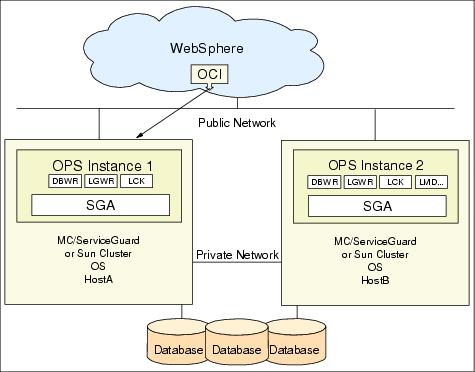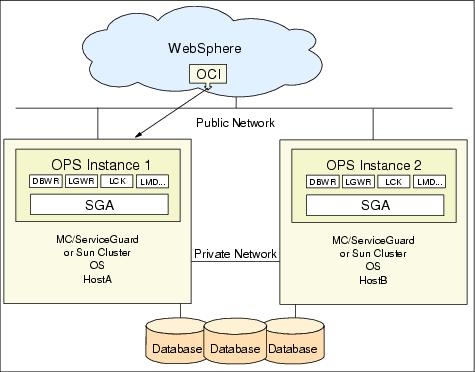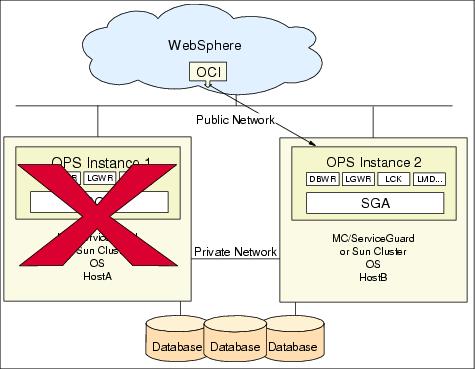You can configure OPS/RAC into a failover mode, as shown in Figure 12-10, or a failover with load balance, as shown in Figure 12-11.

Figure 12-10 OPS/RAC configuration without load balancing

Figure 12-11 OPS/RAC configuration with load balancing
You can also configure OPS/RAC as a part of your Oracle distributed database system for your partitioned data or other applications, for the purpose of isolation or scalability. As shown in Figure 12-12, four Oracle instances are created to serve three databases: Instance 1 and Instance 2 share the common data files and control files on multi-host shared disks.

Figure 12-12 OPS/RAC and distributed database configuration
As shown in Figure 12-12, when an instance in OPS/RAC fails due to a failure of host hardware, software, network, or Oracle itself, OPS/RAC will automatically fail over to another pre-existing healthy Oracle instance. The healthy Oracle instance can access the log files of the failed Oracle instance and must complete cleanup work to maintain database integrity. Since OPS/RAC does not need to start another Oracle instance for failover, it is much faster than the IP takeover option.

Figure 12-13 OPS/RAC after failover
We now describe the steps you have to follow to configure OPS/RAC for use with WebSphere.
|
Prev | Home | Next
WebSphere is a trademark of the IBM Corporation in the United States, other countries, or both. IBM is a trademark of the IBM Corporation in the United States, other countries, or both. |



